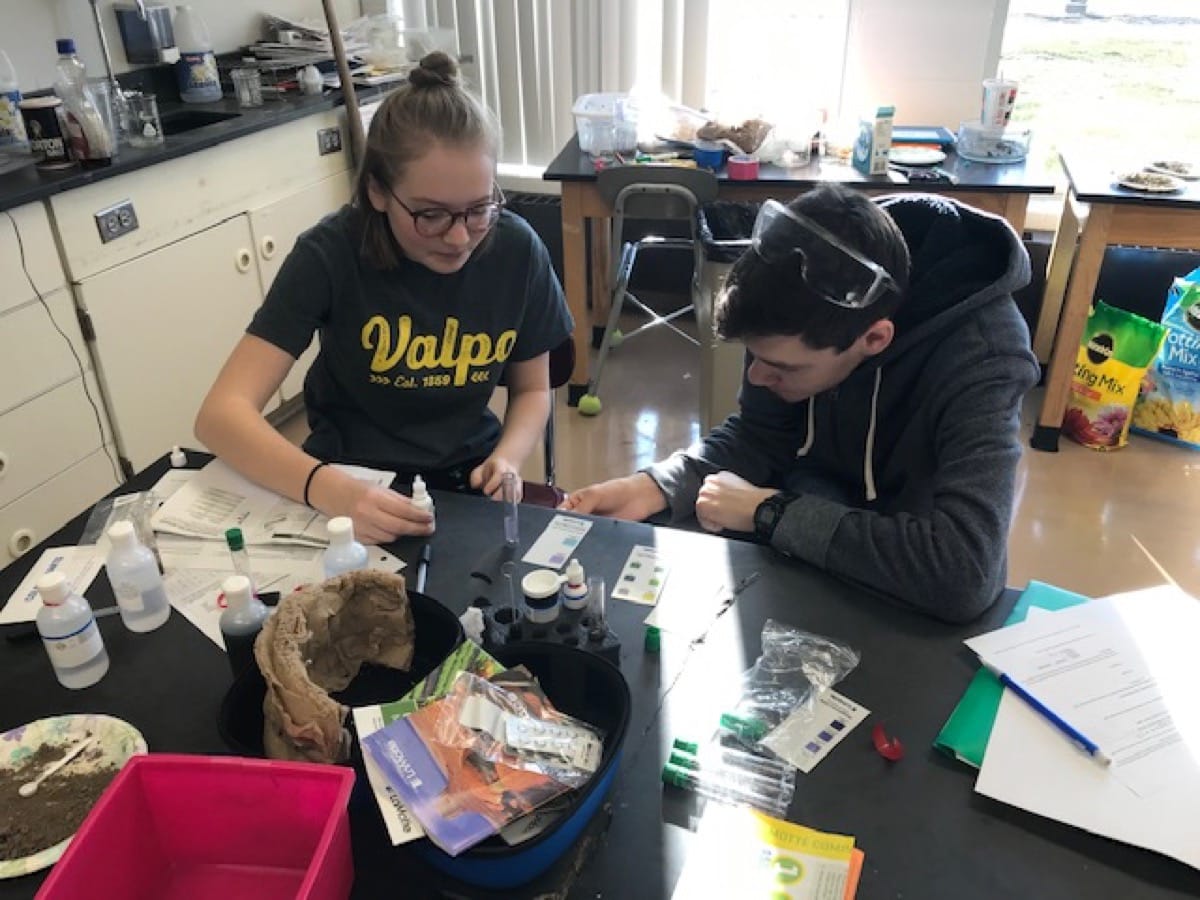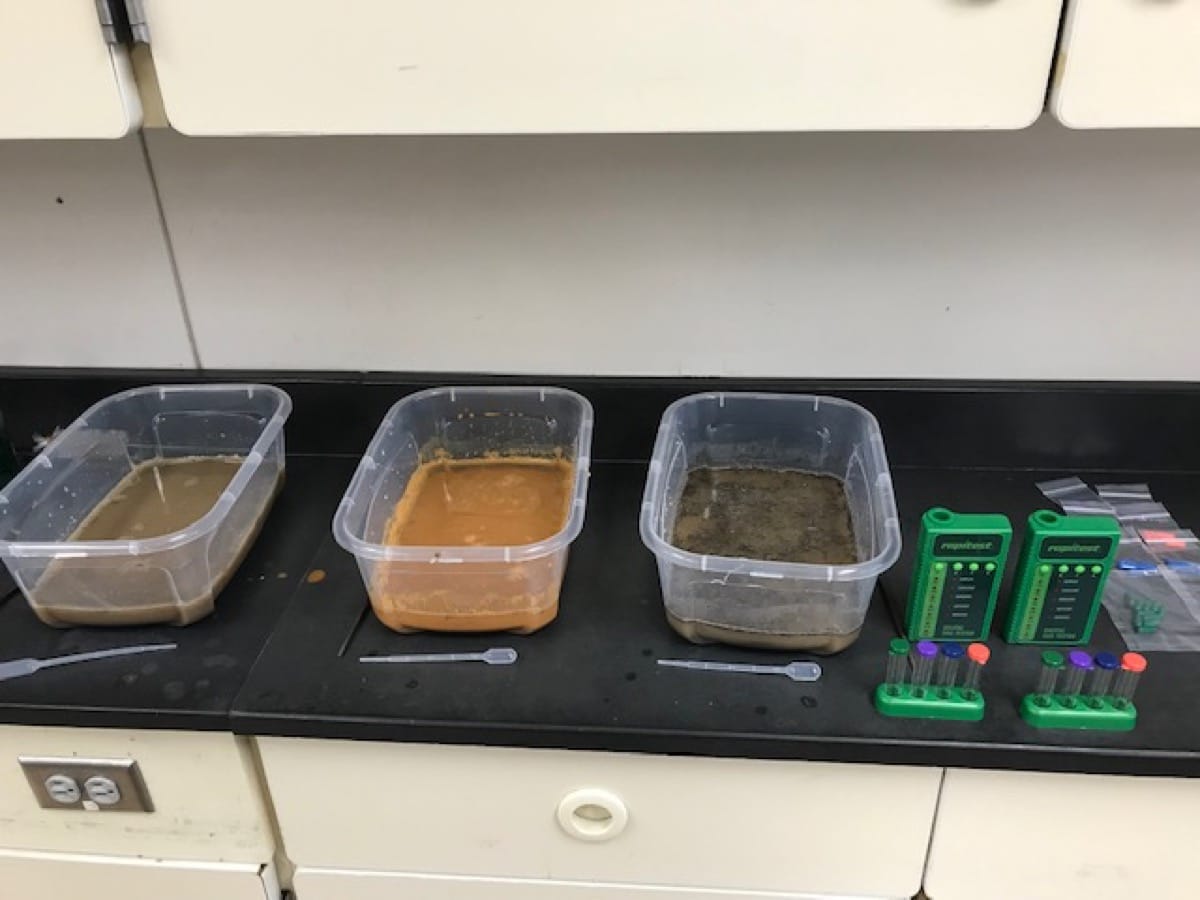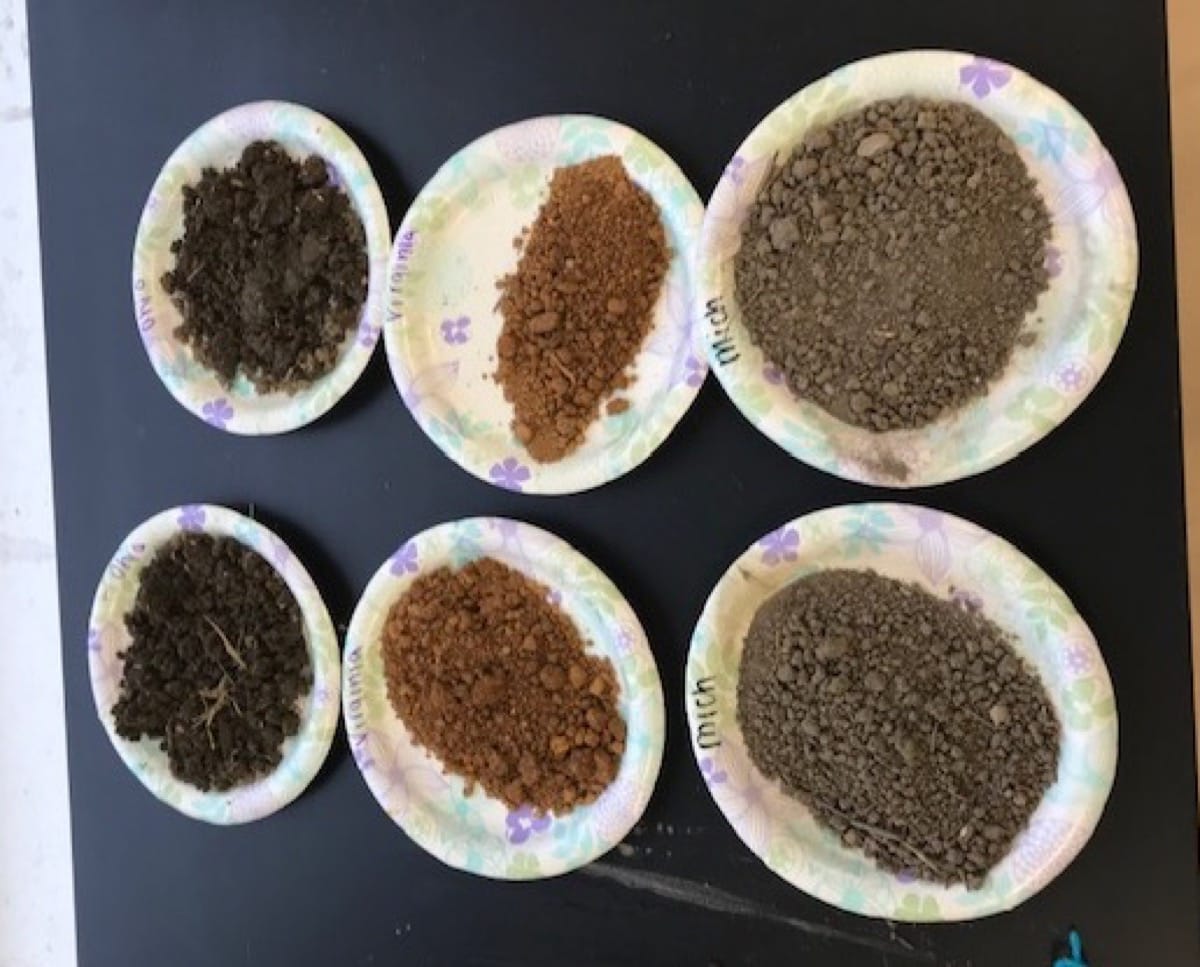
Looking for an engaging activity to connect with AP Environmental Science? Catherine Howard at Stow-Munroe Falls High School used activities and supplies from the Feed the World workshop as part of the Earth’s Systems and Resources unit. This unit included a subsection on soil formation and properties of soil that she addressed primarily through a background reading assignment and the two-day lab.
Howard provided students with soil from three different geographic locations: Michigan, Ohio, and Virginia. Each student group chose one type of soil to test for their labs.


-
Qualitative tests: Students observed the color of the soil and the presence/absence of organic material in the soil. They used the “ribbon test” to try to determine the texture of the soil. Students also used one of two test kits, the LaMotte kit supplied by the workshop and the Rapidtest digital soil kit, to get qualitative measurements of Nitrogen, Phosphorus and Potassium.
-
Quantitative tests: Students also used the soil test kits to determine the pH of the soil. They calculated the porosity of their soil by measuring how much water it could hold. They also used the “shake” method to separate sand, silt, and clay so that they could determine the texture of their soil quantitatively with a soil triangle and compare to their qualitative determination. Due to equipment limitations, students collected data for permeability using samples of sand and gravel instead of their soil. The permeability test was done as a whole-class demo instead of in individual lab groups. However, each lab group did their own calculations.
Howard said, “Overall, the lab went very well. My students enjoyed the soil activities and we were able to compare results from the different geographic regions. The students really responded well to the two different ways to determine texture, and we were able to link differences in the texture to differences that they found in the porosity measurements. The groups were excited when their qualitative and quantitative measurements “matched up”. This was definitely one of the favorite lab activities that my students were able to do during the quarter!”
The highlight of the workshop for Howard was the industry dinner. “I was able to talk to actual corn growers about the methods they employ to be environmentally responsible and the challenges that they face in light of weather, climate change, and regulations. In environmental classes, farmers are often painted as being irresponsible with their use of fertilizers, herbicides and/or pesticides. It was nice to hear their perspective and to learn about all of the educational outreach that goes on within the agricultural community.”
“I also appreciated the time that was given to try out the lab materials during the workshop. The activities gave me a better understanding of the large-scale processes that are going on with corn, especially ethanol production. The workshop developers did an excellent job connecting corn to MANY of the topics that we cover in high school biology and environmental classes.”
Watch for upcoming Feed the World workshops in our monthly newsletter and social media!